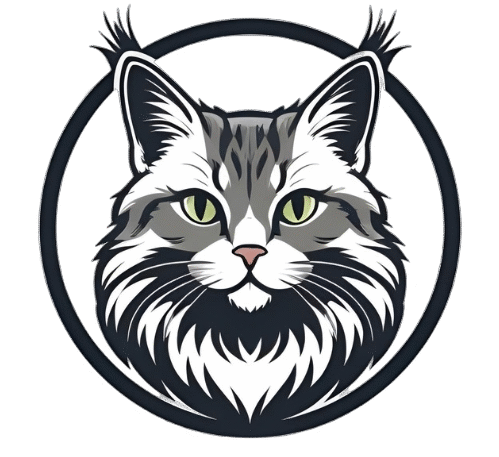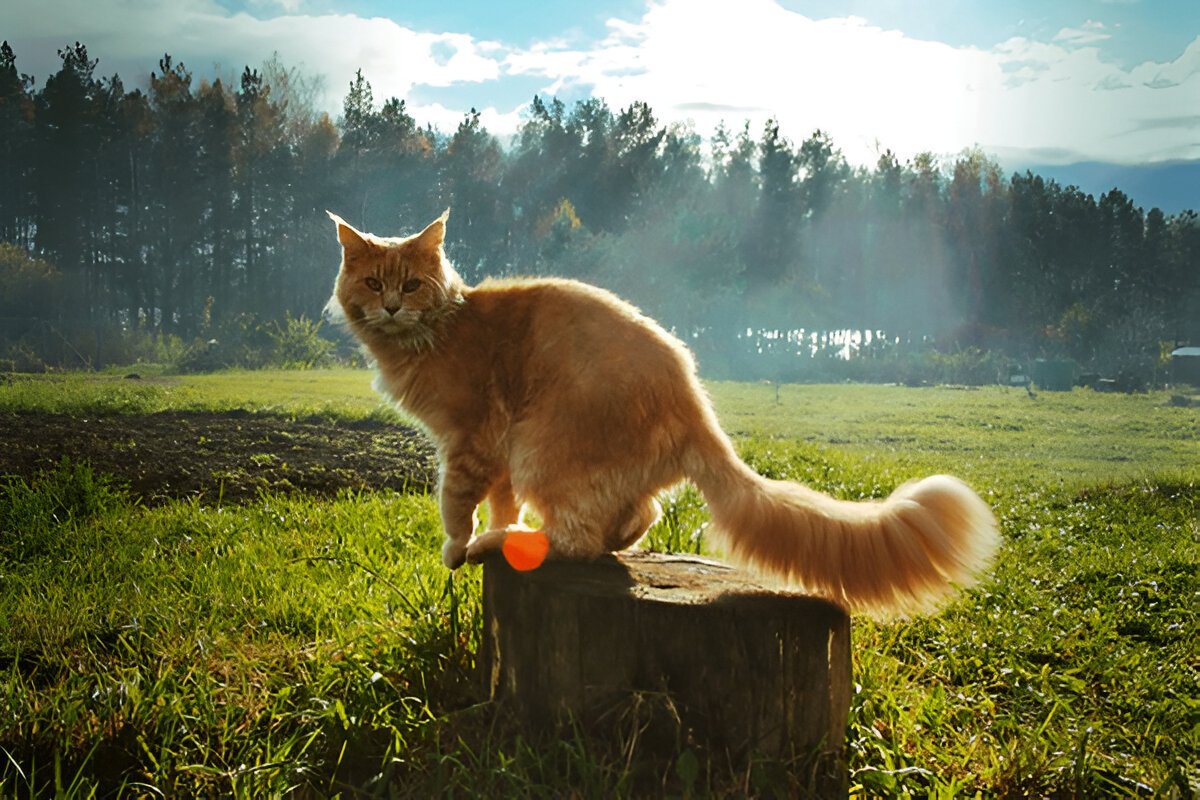If you’ve ever seen a Maine Coon, you know they’re hard to forget. They are big, fluffy, and have a wild appearance that matches the forests in Maine. In fact, the Maine Coon is the official state cat of Maine, and most people in the state are pretty proud of that.
Since they are one of the oldest natural cat breeds in North America, their background is surrounded by stories, legends, and scientific interest, which adds to their charm.
But the question still remains the same! where do maine coon cats come from?
They are recognized by their thick fur, long tails, and huge, puffy paws, all of which help them survive the snowy New England winters.
Folk Legends and Tall Tales
When it comes to where do Maine Coon cats come from, you’ll hear a lot of stories—some more believable than others.
- The Raccoon Myth: Some old-timers used to say Maine Coons were half raccoon because of their bushy tails and some brown tabby coloring. However, cats and raccoons are not able to mate and produce offspring[1].
- The Viking Theory: Suggests Vikings brought longhaired cats to America around 1000 AD, which interbred with local cats, contributing to the Maine Coon lineage.
- Marie Antoinette’s Cats: Another tale claims that before her execution, Marie Antoinette sent her prized Angora cats to America, where they became ancestors of the Maine Coon.[2]
- Ship Cats: The main and most reasonable theory is that European ship captains brought longhaired cats on board to get rid of rodents. These cats disembarked in Maine ports and bred with local cats, eventually evolving into the Maine Coon.
Despite these colorful stories, genetic studies show Maine Coons are closely related to the random-bred cat populations in the northeastern US, particularly those from the UK, and not directly descended from Norwegian or Siberian Forest cats.
The common traits they share are a result of both evolving to cope with cold temperatures instead of being related by a common ancestor[3].
Science Speaks: Genetic Origins
When scientists examined DNA from Maine Coons, they found that these cats were genetically closest to unpedigreed cats from the Northeastern United States and the United Kingdom.
Maine Coons are not a descendant of Norwegian Forest Cats, yet they bear certain similarities because both breeds had to survive harsh, cold climates, so they each developed similar characteristics, such as thick fur and large bodies, a phenomenon referred to as “convergent evolution.” [1]
The Breed in Early America
Maine Coons existed as an “official” breed from at least the mid-nineteenth century. Farmers in Maine were exhibiting their ‘tough,’ and ‘intelligent’ “coon cats” at fairs, telling tales of their prowess at least as far back as the 1860s!
One of the first notable Maine Coons was “Captain Jenks of the Horse Marines” and first written of in 1861. In 1895, a Maine Coon named “Cosey” took Best in Show at the first major cat show in the US held at Madison Square Garden in New York City[4].
Survival, Decline, and Revival
Maine Coons were hugely popular in the late 1800s, but when new fancier breeds like Persians appeared from abroad, they quickly faded into the background. By the mid-1950s Maine Coons were extinct as a recognized breed.
Fortunately, a few Maine Coon fans in Maine and other nearby states began to work to save the breed, forming clubs, and writing breed standards. By the early 1970s Maine Coons were on the rebound, and today they are one of the most popular breeds of cat in the world[1].
So What Makes Maine Coons Special?
Maine Coons are uniquely large, strong, tufted ear, bushy tail, dense and water-repellent. They also have unique personalities—they are affectionate, intelligent, playful, and social kitties that love active homes and forming tight bonds with their human families.
Maine Coon cats are special for several distinctive reasons that set them apart from other breeds:
- Size and Appearance
- Personality and Temperament
- Vocal and Social
- History and Origin
- Health and Care
All in all, Maine Coons are remarkable due to their big size, beautiful looks, friendly and intelligent “dog-like” nature, ability to be part of a family and special history as a breed from the cold north[5].
Myths vs. Reality: What Makes a Maine Coon a Maine Coon?
Which parts are true and which parts are not?
Maine Coons aren’t a mixture of raccoon or bobcat. They did not come from royal blood, but instead from strong everyday cats that survived out in Maine.
Generations of natural selection, along with the help of sailors and settlers, gave them their thick coats, big feet, and friendly nature.
The Maine Coon in Culture and Daily Life
Maine Coons were special not only for their looks, but also for helping catch mice on farms and ships. Many people still choose them because of their friendly, dog-like manner and how easily they join families, kids, and even other pets. Because of their large bodies and unusual looks, they are often famous on the internet as well.
Conclusion: An Unanswered Question
With all the research and history, there are still many details about Maine Coons’ origin that are unknown. A part of what makes them special is the mystery surrounding them.
If you think about Viking ship cats or New England barn cats, you can’t argue that Maine Coons represent the USA well, with a bold background to match their personality.
References

